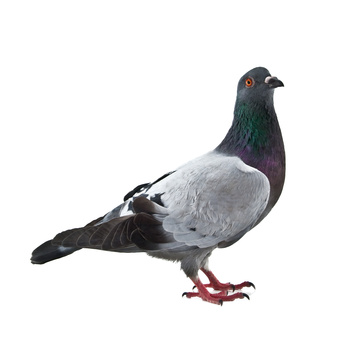 Feral pigeon (Columbia livia)
Feral pigeon (Columbia livia)
History
The feral pigeon is found throughout Britain and also in most regions of the world. Many people associate this bird with urban environments and as such are sometimes called the ‘town pigeon’. However it is often found in rural situations such as on farms.
Historically, these birds are descended from rock doves which explain why they often nest on buildings and other structures, usually on ledges, under eaves or on girders.
Nests are constructed of grass and twigs but can also contain rubbish which has pieces of plastic.
Habits
The feral breeding population is boosted by racing pigeons or escaped birds from domestic lofts. The peak breeding season is between March and July but feral pigeons are capable of breeding all year sales.
The brood usually of two off-white eggs laid on consecutive days. Incubation lasts for about 18 days and the hatched chicks are fledged after about 30 days.
Surprisingly, another clutch can be laid when the young are only 20 days old. This means that up to nine broods can be produced per pair per year.
Feral pigeons tend to scavenge food, often at food premises, docks and mills and flocks of several hundred birds can be common where spillage is abundant.
In urban environments, they are encouraged by members of the public feeding them birdseed, bread etc.
How do we control pigeons?
Various methods of control for this species are allowed by law, these include all humane methods such as netting and anti perch spikes.

